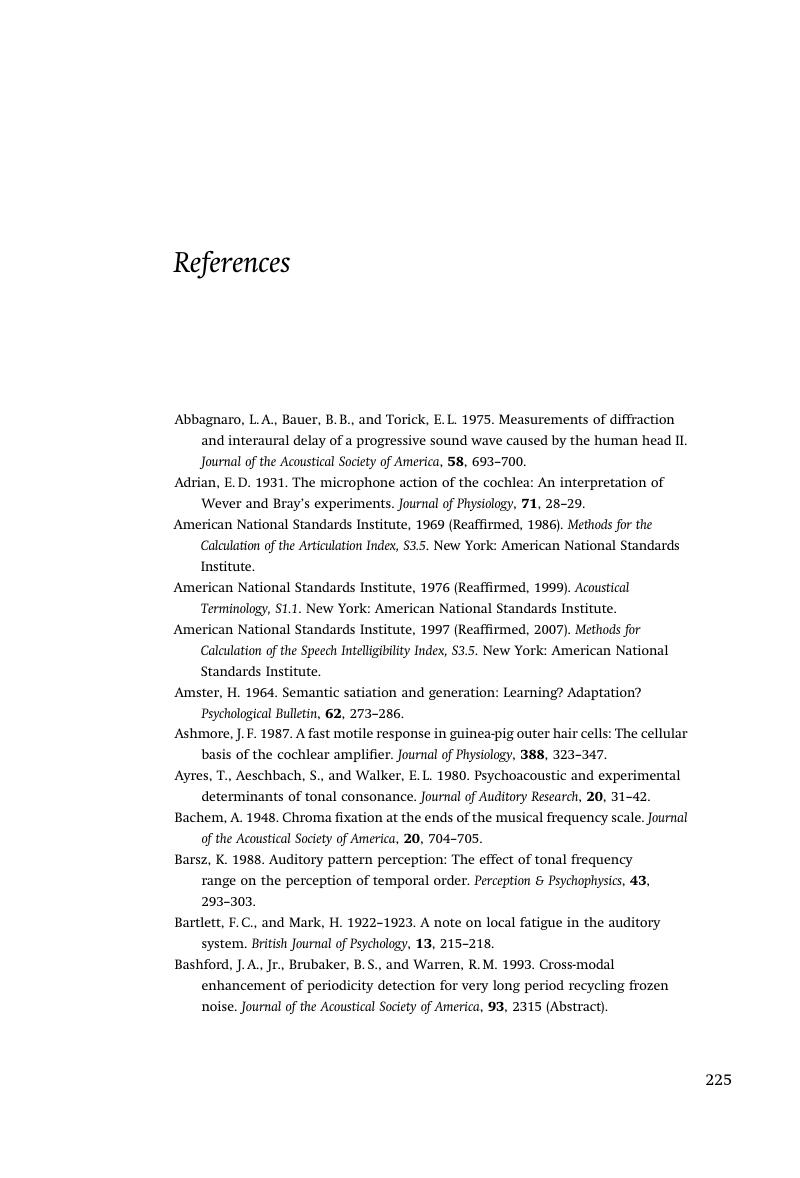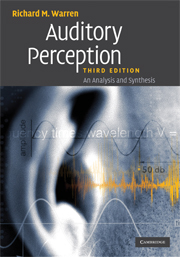Book contents
- Frontmatter
- Contents
- Preface
- 1 Sound and the auditory system
- 2 Spatial localization and binaural hearing
- 3 Perception of acoustic repetition: pitch and infrapitch
- 4 Judging auditory magnitudes: the sone scale of loudness and the mel scale of pitch
- 5 Perception of acoustic sequences
- 6 Perceptual restoration of missing sounds
- 7 Speech
- 8 The relation of hearing to perception in general
- References
- Index
- References
References
Published online by Cambridge University Press: 18 May 2010
- Frontmatter
- Contents
- Preface
- 1 Sound and the auditory system
- 2 Spatial localization and binaural hearing
- 3 Perception of acoustic repetition: pitch and infrapitch
- 4 Judging auditory magnitudes: the sone scale of loudness and the mel scale of pitch
- 5 Perception of acoustic sequences
- 6 Perceptual restoration of missing sounds
- 7 Speech
- 8 The relation of hearing to perception in general
- References
- Index
- References
Summary

- Type
- Chapter
- Information
- Auditory PerceptionAn Analysis and Synthesis, pp. 225 - 255Publisher: Cambridge University PressPrint publication year: 2008



